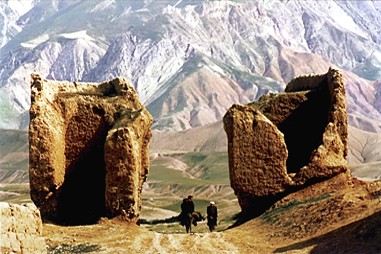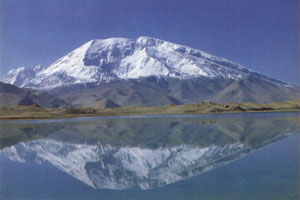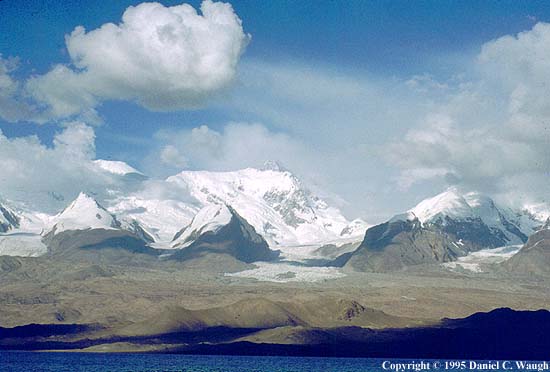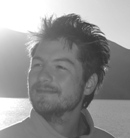Mountain Journey to Karakul Lake and beyond
Journey so far: .. Taiwan > Hong Kong > Beijing > Harbin > Yanji > Songjianghe >Changbai Mountain > Dandong > Dalian > Dandong > Chengde > Beijing > Datong > Hohhot > Huitengxile > Hohhot > Taiyuan > Zhengzhou > Xi'an > Lanzhou > Zhangye > Jiaugyuan > Jingtieshan > Jiaugyuan > Dunhuang > Urumuqi > Kanas Lake > Urumuqi > Kashgar (Kashi) > Tashkurgan > Karakul Lake > Kashgar (Kashi) ....
We just got back from an amazing 3 day journey in the mountains and as far as the last Chinese town before the Pakistan border, Tashkurgan.
We started in Kashgar, rushing to the bus at 10:00am, as the Seman Hotel decided it would be fun to make me wait and deal with everyone else first. One of the checking out donuts broke the hot water bottle and refused to pay the damages. So we rush and make it to the bus station with a few seconds to spare. I get pushed roughly to the passenger seat alongside the driver. Squashed, uncomfortable and baking in the sun, but this turned out to be the "panoramic-viewing" seat! Excellent for picture taking, if you don't mind reflections in glass all over the pictures. :0)
The Karakorum Highway

It was a 6 hour drive, not long in Chinese terms, taking us high up into the royal blue skies. Mild altitude sickness is common for travellers luckily I had no breathing problems. I thank my asthma as my weak lungs deprive me of oxygen, so my body didn't register any change!
We stopped at Tashkurgan. A small town still doing the same thing it did 1,500 years ago, housing travellers heading into or out of Pakistan/China.
The Chinese Moon Festival starts on October 1, so millions of Chinese jump aboard tour buses and roam the land. Some came as far as Tashkurgan, which made it hard to find anywhere to stay. We had made friends with a lovely Italian lady of around 50 years, she trotted along behind us with a strong Italian accent asking, "Where we going?".
After much trouble, stress and moaning we got a small partitioned cave in the "Dirty, Disorganized Hotel". Kate and I (not the Italian lady) had to share one bed, a hard up-turned box with cloth draped over it. Nothing else fitted into the room except a broken chair with cigarrette burns and enough dust to build a sand dune. We had looked forward to sleeping after a day in the bus and were benefited with no sleep at all.
Tashkurgan stop-over, the picture of the Stone City and Fort

Early o'clock we woke up, puffy-eyed, grumpy and smelling of sweat and lumbered to the bus. We headed back on the Karakorum Highway towards Kashgar, stopping after 2 hours at Karakul Lake, to spend the night in a yurt.
Useless Factiod: YURT, A circular, domed, portable tent used by nomadic peoples of central Asia, from the Russian `Yurta` of Turkic origin.
The lake and yurt, just like the one we stayed at

Karakul Lake is stunningly breath-taking. Here we were standing at 3600m and around us the snow-peaked mountains rise for another 4000m. At the lake it's possible to see the mountains Muztagata (7546m), Kongur Tagh (7649m) and Kongur Tiube (7530m). These are perfectly reflected in the lake and give the place a strange postcard beauty that is difficult to absorb at once. I sat and stared in relative quiet and considered this one of the most naturally beautiful places I've ever been to.
The lake and Mount Muztagata behind

We avoided the crazy 50Y entrance fee, which allows you to hang out with 1,000 Chinese tourists spitting and shouting all over the place. So we walked 1km down the road, found a small opening in the fence and made our way with purpose to the yurts.
The long sweeping Kongur peaks

We spent one night in an authentic yurt (the hosts lived there). Unlike the concrete ones, this yurt was made with animal skins and other naturally found things. No electricty, no boiler, no TV, no computer room, just the way it's meant to be.
The yurt woman cooked us a nice evening dish of rice and a few vegetables fried in spices. It took ages to make and she did everything methodically, but I was so hungry I enjoyed watching the whole procedure with salivating delight.
In the morning the bus back to Kashgar was full. No problem! I was excited by my morning idea. Cover the 200km to Kashgar hitch-hiking. Kate was less enthused. We began to walk, with the moutains ahead and thumbed all the passing traffic. After an hour or so walking and sweating in the heat, a van pulled up and we got a lift. After another 4 hours heading towards Kashgar we pull up and he gives me the rude and greedy finger rubbing to indicate money. Bastard! We ask how much. He wants 150Y. I laugh angrily, snarling, wanting to bite his head off. The bus is 40Y each. Anyway I offer 30Y each and he accepts. Bargining over. It leaves a sour taste in my mouth, but we are back and it was cheaper than the bus. The locals paid him for the ride, but we'll never know how much.
Now we're ready to leave Kashgar, heading through the southern silk road to Hotan. We've already travelled the northern silk road, which goes as far as Kashgar, then circumnavigates the Taklamankan Desert south, heading back into east China. This road is under-developed and dusty which means the journey we are now taking to Golmund will take days on a bus (no trains).
A map showing the oval-shaped silk road travelling around the desert, coming from the east of China. From Kashgar the silk road continues into central Asia.

MC




0 Comments:
Post a Comment
<< Home